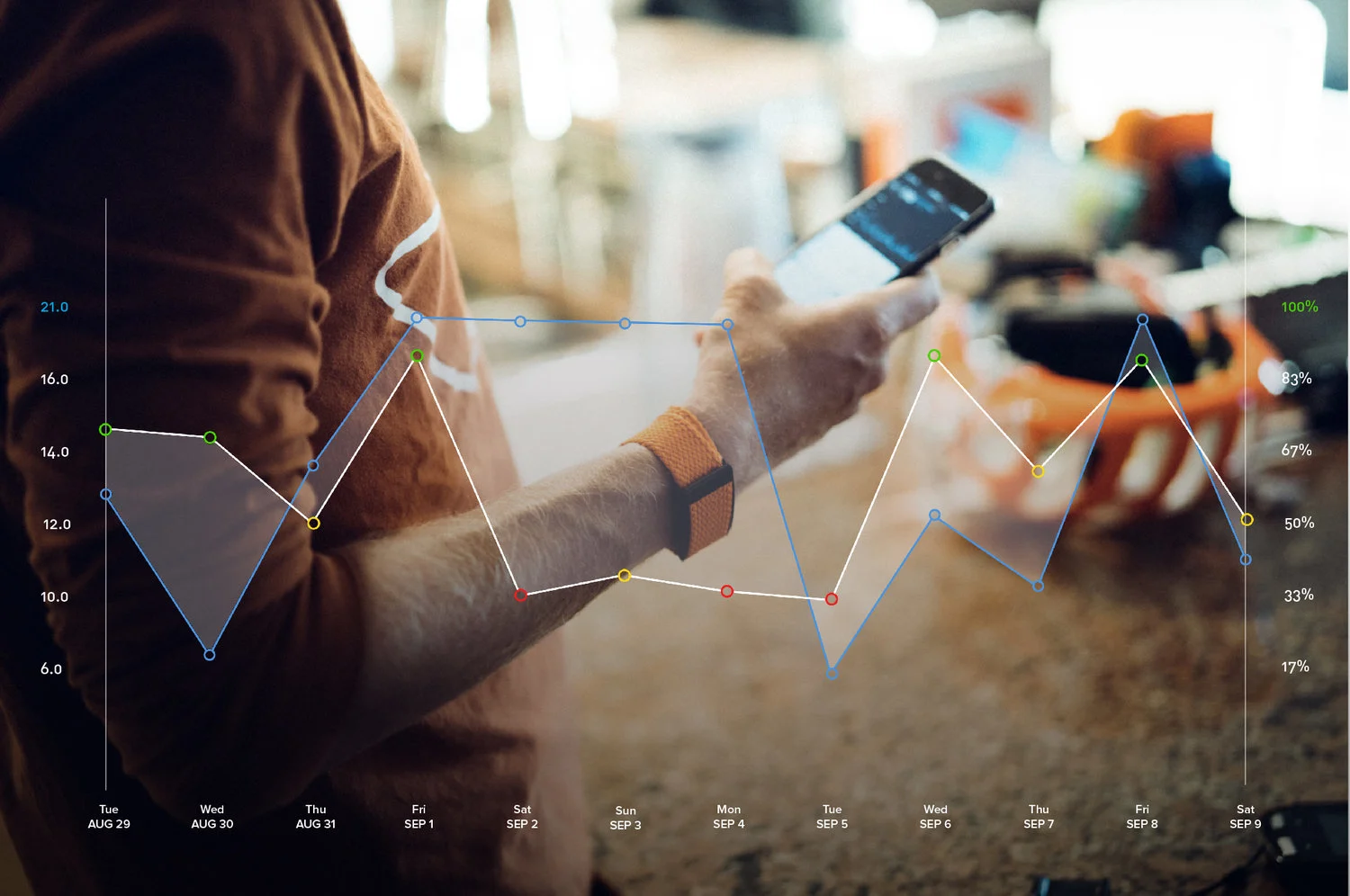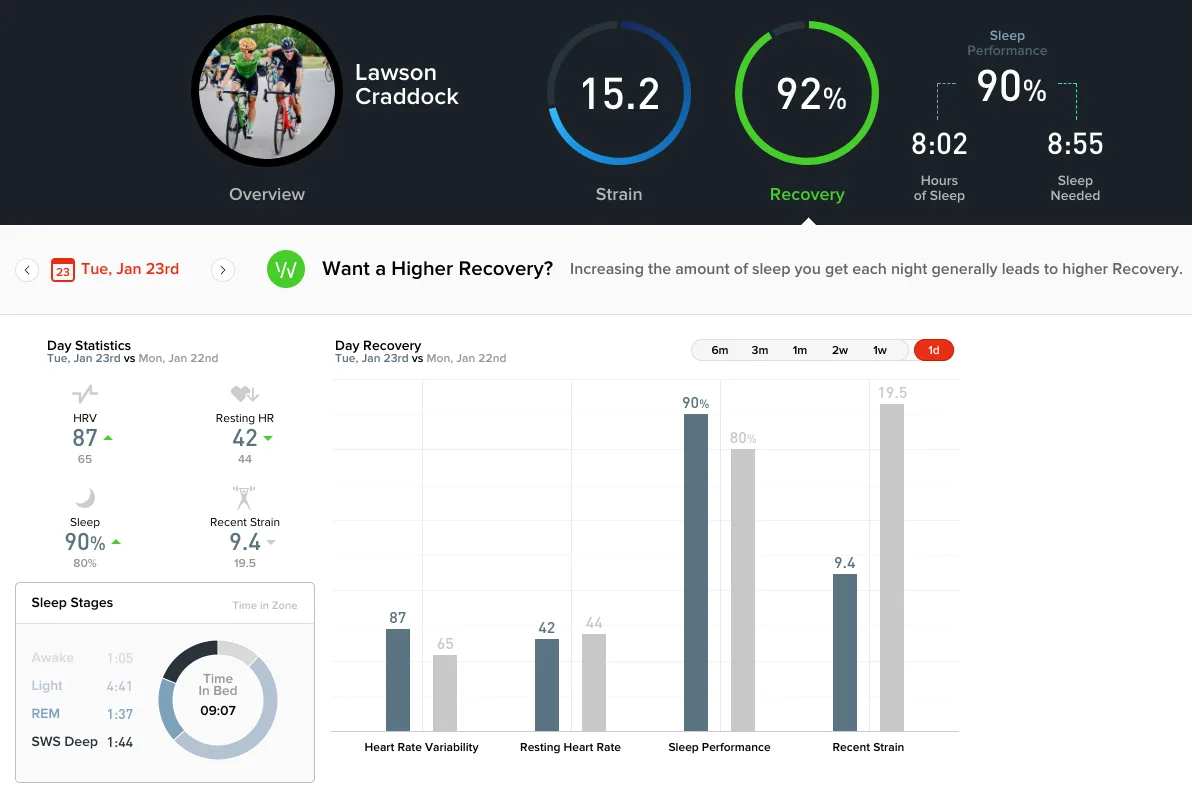Topics
- Article
Pro Cyclist Lawson Craddock Tells his Strain & Recovery Story

I was born on February 20th, 1992. I’d say my cycling life started February 21st, 1992.
I’ve been around bikes my whole life. My dad raced professional downhill way back in the day, before it was even a real thing. He was always riding recreationally when my brother and I were kids. I entered my first race when I was four years old, a local pee-wee mountain bike event.
When I was 10, I started racing competitively out at the Alkek Velodrome in Houston, TX. I raced there pretty much my entire junior career. Every year I got more and more into it. I raced internationally for the first time in Canada at age 15. A year later, I traveled to Europe as part of the U.S. national team. Ever since then, I’ve been competing internationally and progressing through the ranks of the sport.
The dream of all cyclists is to ride in the Tour de France. Growing up, it was always something I figured was just a dream. But as the years went on, it slowly became more and more realistic. I’ve been very fortunate to have the right opportunities and be put in the right places to capitalize–I had great coaches as a junior and I raced on basically the world’s best development team in Axeon Hagens Berman, led by Axel Merckx.
All of that kind of put me on this path.
In 2016, I raced the Tour de France for the first time. When I got the call saying I’d been selected for the team, I was overjoyed. But I also thought to myself, “You’ve done the easy part, now you actually have to go there and perform.”
It turns out the @letourdefrance is hard. Really hard. Glad to have the first rest day here!!
A post shared by Lawson Craddock (@lawsoncraddock) on Jul 11, 2016 at 7:05am PDT
Being there was an incredible experience. I lined up in the first stage next to one of my best friends, a guy I’d been teammates with for a long time, and we both just sat there in this surreal moment. We’d reached the pinnacle of cycling. That was really special to me.
On the other hand, I had no idea what I was getting myself into. As the race progressed, I got more and more tired each day. Then the mountains came. At first I thought I was some hotshot who could compete up there, but I quickly found myself being left in the dust. That was when I realized how big a step up the Tour de France is from any other race on the calendar. I kind of got my teeth kicked in over the last week, but all that did was light a fire underneath me to be better next time.
Crossing the finish line in Paris was the highlight of my career so far. My fiancee (now my wife) and parents made the trip to France to watch the final stage, it was amazing to have them there to share it with me.
I left the 2016 Tour de France with a lot of motivation to come back in the future and turn the race upside down. I needed to be more than just a guy who hung in there, I wanted to be a guy ready to compete for glory.
In hindsight, it may have given me too much motivation heading into the next offseason.
I trained harder than I’d ever trained in my entire life. I also dieted harder than ever before. At first, it seemed like it was all working. When I hit the beginning of the 2017 season I was lighter and faster. My early results were very encouraging.
A post shared by Lawson Craddock (@lawsoncraddock) on Feb 6, 2017 at 9:09am PST
Unfortunately, it didn’t last. I was ignoring all the small signs of not recovering properly, of not refueling my body properly. I had a mindset that the more tired I was, the more dead I was when I came home from training rides, the better I’d be when it was time to compete.
As the season wore on, I started to notice that things weren’t quite right, both mentally and physically. I was really crabby all the time, kind of short with everyone. I never wanted to leave the apartment and I was no longer able to train hard like I used to. I’d go to races and be one of the first guys dropped. After all the work I’d put in, I couldn’t believe what was going on.
I got stuck in a downward spiral for the rest of the year. I’d think that I could push myself, I’d try to do too much too soon, and next thing I knew I was right back where I started. For every two steps forward, I ended up taking three steps back.
2017 was really just a disastrous year for me on the bike. I needed something to get me out of the funk I was in. At a race one day, I noticed our team doctor wearing a band on his wrist that I’d never seen before. I asked him a bunch of questions about it, and he told me how it tracks your daily Strain, Sleep and Recovery. I thought “Wow, this would’ve been really beneficial to me last season.” Shortly afterwards, I reached out to WHOOP and they sent me a Strap.
Almost from that exact point on, things started to shift back in the right direction for me. Right from the start, WHOOP helped me break the cycle of overtraining. Take a look at this two-week sample of my Strain (blue) and Recovery (green, yellow and red) data shortly after I began wearing it:

After a few relatively chill days, I started to notice my Recovery trending upwards. Coupled with how I was feeling, it seemed like a great time to push myself. I trained hard for several days and towards the end of the block I saw my Recoveries starting to drop. This was a good indication that I was in need of rest in order to help build fitness. From September 5th on, you can see that a few easy days helped my Recovery dramatically, a great sign that my body was ready to take on more Strain. Thankfully, I was able to pay close attention to these Recovery indicators, whereas in the past I would’ve ignored them and continued to push my body past its limits.
Having these metrics makes such a difference. When I can look in the morning and see a low Recovery (like 62% on September 7) I think, “OK, I’ve got to be better.” Then I do things like focus on being hydrated, taking a nap in the afternoon, maybe getting to bed 20 minutes earlier that night to try to hit 90% the next day.
One of the big stats I pay attention to is Sleep Performance. I think it’s really valuable to look and see how long you spend in certain stages of sleep. Typically you want at least an hour of deep sleep per night. That was something I wasn’t getting when I first started using WHOOP.
I keep a close eye on my HRV (heart rate variability) and resting heart rate as well. For example, I may say to myself “Hmm, my RHR is higher than normal today, what’s factoring into that? Am I fatigued? Am I sick?” I also like to see how certain training regimens and nutrition habits can affect my HRV.

When I started doing all of these things and paying attention to my body more, I really began noticing a difference. Ever since then I haven’t had any issues. Unfortunately, there wasn’t enough time for me to get back to my standards in 2017, but it’s setting me up to be primed to perform in 2018.
I’ve got big goals for the year ahead. Obviously I’d love to return to the Tour de France. I’m looking forward to seeing what WHOOP can tell me about competing there and at the other Grand Tours (Giro d’Italia and Vuelta a España). They’re unlike any other races–so much more hype, more fans, more media, a lot more stress. All of those things impact your day-to-day Strain and Recovery over the course of a grueling three weeks.
Beyond that, there are several other major races in the spring, like Pais Vasco, which is quite possibly the hardest race in the world that no one has ever heard about. I’ve had solid results there in the past and I’d love to fight for a stage win or a good overall placing in the final. The Ardennes classics and the Tour of California are events I’d love to have positive results in as well.
Most of all, I just want to be back.
Being on the world tour means a lot of time on the road, both literally and figuratively. You’re riding alone on the bike for 25 hours a week, not to mention the travel. You’ve got 70, 80, maybe 100 race days per season, most of which are in Europe. Add in travel days before and after and it’s probably 120 nights a year you’re sleeping in a hotel bed. That’s a lot of time spent away from home not putting roots in anywhere. It can be quite challenging, especially when things are going poorly and you’re not getting the results that you know you’re capable of.
Last year put a lot of things into perspective for me. I realized I was taking racing and the lifestyle for granted. When it gets taken away from you, that’s when you really start to appreciate what you have.
The fact that I get to live in Spain for part of my life with my wife is incredible. We’re so fortunate to have an apartment in Girona, which in my opinion is one of the coolest European cities there is. It’s great for training, has beautiful scenery, it’s just an amazing community.
I’m also remarkably lucky to have such an inspiring group of people around me. My wife, my parents, my in-laws, my friends, everyone that I keep in my close circle is extremely supportive. I think that’s really crucial to succeed in this sport.
Hopefully 10-15 years from now, when my career is over, I’ll look back at 2017 and be appreciative of what happened and the knowledge I gained from the experience. I’ve learned a lot about myself in the past year, and I believe there are many valuable lessons I can take moving forward in the next chapter of my journey.